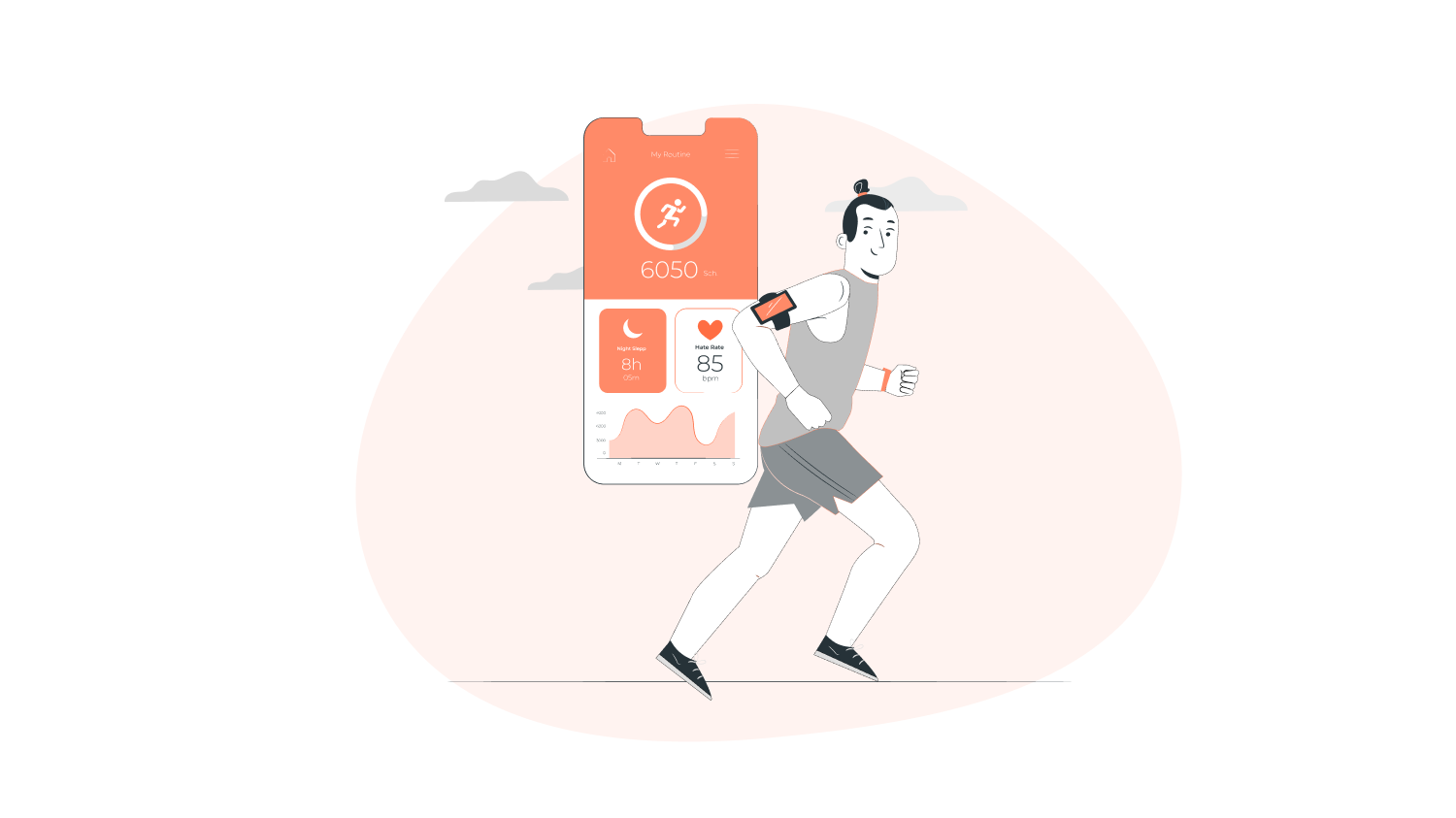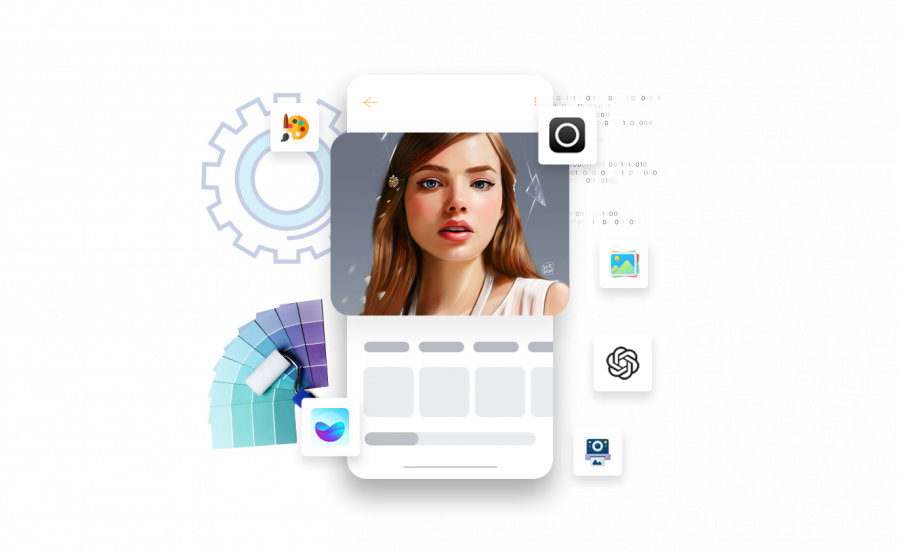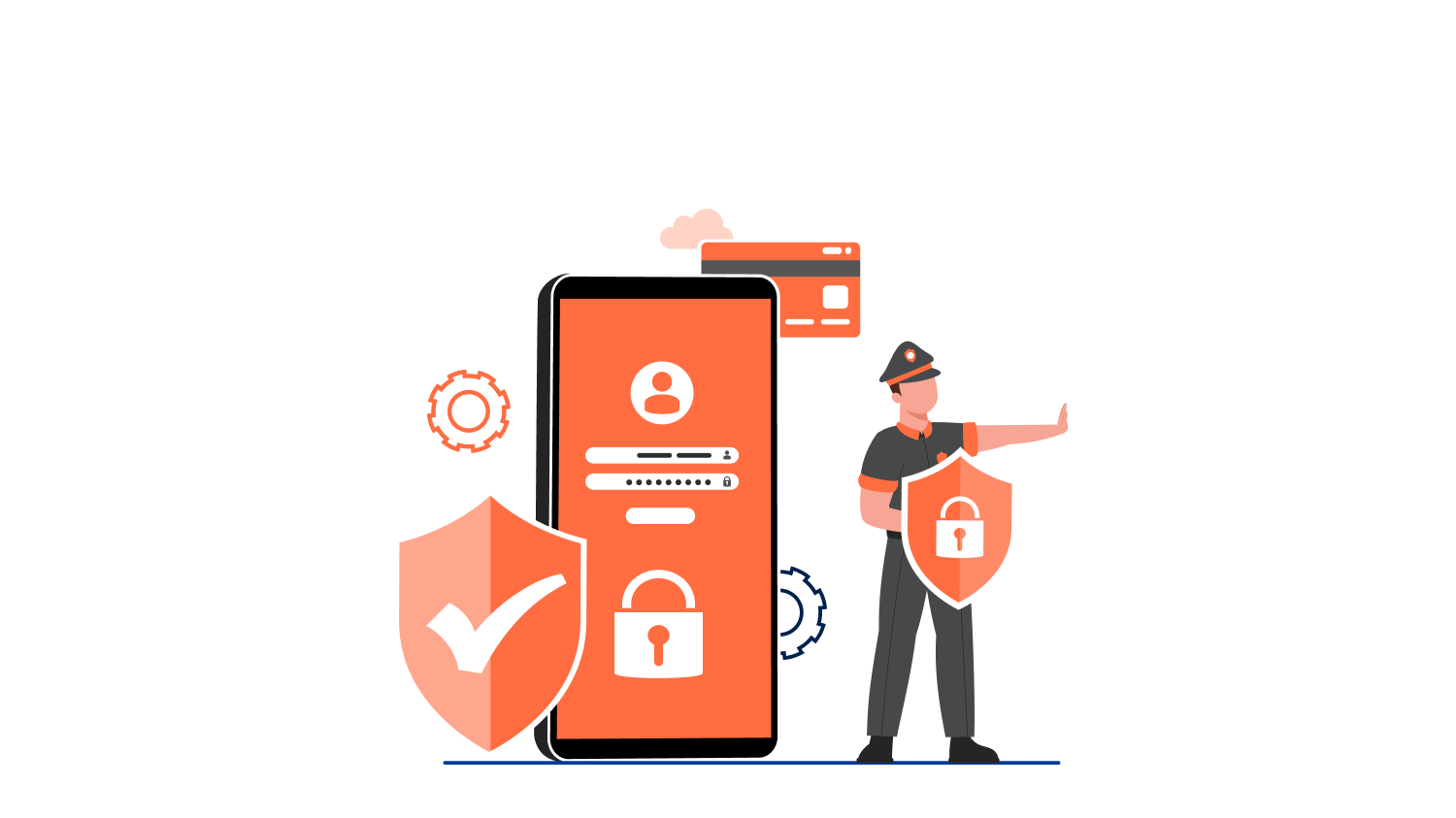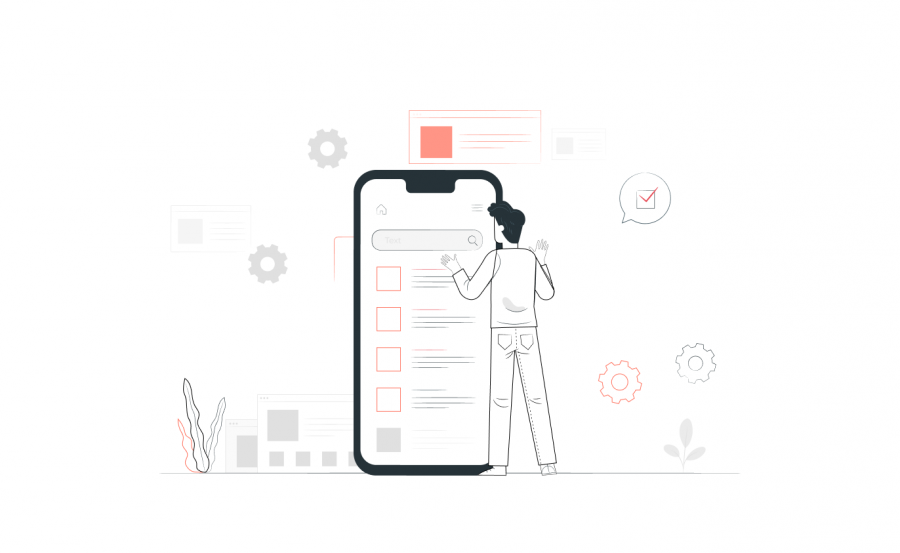As recently as a few years ago, fitness has developed as a new religion for folks worldwide.
According to the app industry’s pioneers, fitness-tracking apps were created due to considerable consumer demand.
The COVID-19 virus has forced the closure of several gyms worldwide, but many people still use exercise applications to stay in shape. According to the latest studies, this trend toward self-improvement has shifted from New Year’s resolutions to habits, increasing the number of people using Health & Fitness apps.
There has been a dramatic rise in fitness applications due to many factors, including the widespread use of smartphones, an increased understanding of health and wellness, a rigorous work schedule, and a growing desire for wearables.
If you’re in the fitness business, now is the time to get serious about fitness app development and reap the rewards. Knowing what makes an app like Fitbit popular before you start developing yours is essential.
What exactly is a fitness application?
A fitness app provides workout programs, diet instructions, nutrient info, and even live healthcare coaching to help users achieve their goals.
Artificial intelligence and machine learning build personalized training routines for its customers in these apps.
For example, the top fitness apps on the market now support users in maintaining their regular workout routines by monitoring dietary choices, recording steps, and tracking the calories burned.
Types of fitness apps
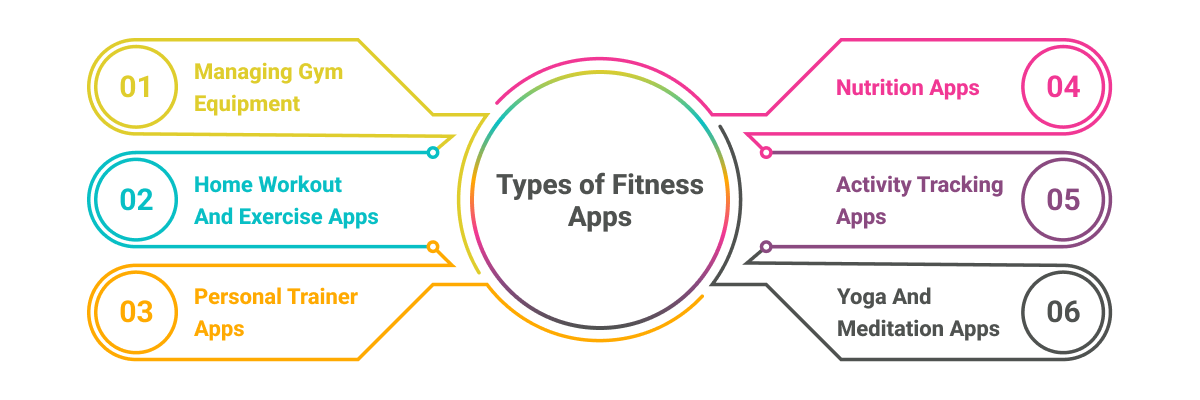
Before diving into the features of a Fitness app, it’s essential to know what kind of software it is. Depending on the fitness app, some features are essential, while others may be extra.
Let’s take a look at different fitness app types.
Managing gym equipment
Gym equipment such as treadmills can be synchronized with users’ preferences using IoT.
Consequently, you’ll get an activity tailored just to your needs. This sort of software helps gym-goers get the most out of their workouts by allowing them to fine-tune their movements.
The software collects and sends the user’s statistical data to a server during the session and works by immediately syncing the user’s data with the settings of the gym equipment right before the workout begins.
Home workout and exercise apps
Users of workout mobile applications receive instructions on how to perform the exercises they intend to perform. In addition, fitness apps instruct their users on the proper technique for working out.
Some of the most popular features for training apps include logbooks, personal trainers, and device-pair fitness options.
Apps that act as personal trainers allow users to customize their workouts by selecting the amount of difficulty and the kind of exercises they prefer. Fitness and health-related progress are easily tracked using logbook applications.
Personal trainer apps
People with hectic schedules would significantly benefit from apps like ‘MapMyFitness,’ which operates as a virtual gym teacher.
In addition, you may access this content online via live sessions, video lessons, 3D models, audio hints, and graphics for each training exercise.
Nutrition apps
To help individuals maintain a balanced diet, nutrition applications use a variety of health indicators, including height, weight, kcal, water balance, etc.
Light sensors also track your daily coffee intake and fat content in these applications. They’ll also put together a grocery list and develop healthy meal plans.
Activity tracking apps
Athletes and sports fanatics are the most likely to use these apps. The app uses numerous optical sensors to determine how many steps you’ve taken and the calories you’ve expended while working out.
These fitness apps can also help you keep track of your sleep patterns and gauge how well you’re sleeping. A digital alarm can also help you wake up quickly and easily. You may also use these applications to control them with your voice.
Yoga and meditation apps
To demonstrate the right way to perform various yoga poses, apps like ‘Yoga Studio’ include live instructions, videos, and graphics. For those looking for ways to calm their mind and body, meditation applications like “Headspace” might help.
Best fitness apps
Before beginning work on your fitness app, you should always make it a point to investigate the existing options on the market and become familiar with the latest industry developments. Getting motivated to work out is easy with the help of these top-rated apps.
Read the top unique fitness app ideas for your fitness app development
1. My fitness pal
- Keeping tabs on Your Meals
- Planned outcomes
- Monitoring your daily routines
- Connect with others who share your interests
2. The 7-minute workout
- Workouts that an expert has meticulously planned.
- Voice-activated and video-guided personal training.
- Custom training builder that’s easy to use so you may create your programs.
- Integration with Google Fit and Apple’s HealthKit.
- Free of charge. There will be no surprises or hidden fees.
3. Charity miles
- This app is compatible with Strava and the Health Kit on your smartphone.
- Sponsors of the app may award incentives to your friends who help you raise money.
- Decide on a cause you believe in and donate to it.
Top 15 Features of a Fitness Tracking App
1. Personal coach and mentor
It is possible to boost the number of people who use fitness tracking software by tailoring it to their needs. Apps that encourage users to utilize them as personal coaches and mentors are better than those that don’t.
Users should be able to personalize their exercises using tools like personalized exercise plans, goal tracking, and performance comparison. Fitness tracking software is supposed to offer a more personalized experience to users.
2. Account creation
Personal account creation is an essential feature to consider when developing a fitness app.
Consider making the profile creation procedure a breeze. It shouldn’t take too long or be too difficult. Users should be able to sign up for an account using their social network credentials and their email.
This will make it easier for you to obtain the necessary knowledge and put it to good use. End users should be able to create a personal account with all the features they desire, input their data, and keep track of their progress.
It’s also good to allow customers to keep their billing information and pay using a payment gateway linked to your mobile app if you plan to provide subscriptions.
3. Wearable and non-wearable device integration
Regarding functionality, no fitness monitoring apps are complete without the ability to connect with wearable technology. Various wearable and nonwearable devices must be integrated into fitness app development, including smartwatches, smart TVs and other gadgets like Amazon Echo and Google Home.
Wearable gadgets make the ability to track one’s fitness activities and routines possible. It improves the app’s usability. Users may also keep track of their fitness routines with the help of wearable technology.
Every person they train is unique, and the information they provide may be used to assist individuals train more successfully. Any physiological parameters may be conveniently tracked with the help of modern intelligent gadgets. The statistics in their progress report may also be compared to the previous week, month or year.
Based on significance, but without regard to any particular ranking. Fitness trackers can be integrated with a wide variety of wearables, including the following:
- Wearables like activity trackers are pretty popular. Walking, swimming, and cycling are just a few of the activities that may be tracked with these devices. Both the type of exercise and the amount of stress placed on the muscles are displayed.
- Medical monitoring equipment may track sleep cycles, pulse rates, and electrocardiograms.
- Stress monitors — devices for keeping track of stress. Users could pause and relax if their stress levels got out of hand!
- There are several similarities between smartwatches and the other gadgets mentioned. In addition, they are among the most widely accessible to end-users and should be considered.
4. Gamification
Working out while listening to music is a no-brainer. It’s easy to add entertaining components to your app processing using gamification. Gaining new users and keeping them around is easier when you employ Badges, Reward Points, and Progress bars.
5. Nutrition tracking
The foundation of every workout regimen is sound nutrition. Nutrition monitoring applications are readily accessible on the market, allowing your customers to keep tabs on their weight by giving them information on calories burnt, water balance, and motivation to adopt healthy eating habits.
One of the most fundamental elements of fitness software is the ability to establish individual goals. You can use the app to generate grocery lists and even gather recipes for nutritious meals if you have problems keeping to a balanced diet.
6. Customised diet plans
A diet tailored to your needs is devised. “bespoke diet plans” refers to diet regimens tailored to your particular energy needs. Your chances of sticking to a diet plan if it includes foods you enjoy will increase. We will consider any dietary restrictions or intolerances and any food allergies.
Avoiding the pitfalls of randomly shopping for a diet without any clear direction or aim is much easier when you have a diet programme created just for you. Because of this, they’ve built an app with a customised diet plan that makes the planning and purchasing process simpler and more focused, saving you significant time.
On social media, it’s not uncommon for people to boast about their successes. It’s impossible to imagine fitness apps that don’t interact with social media sites today.
There are many reasons why fitness monitoring apps are so popular: they allow users to keep track of their daily fitness progress, share their achievements with family and friends, and engage in group activities. Social media is a popular way for customers to share their achievements with friends and family. As a result, people reported feeling more content and motivated to work out more frequently.
Sharing material via third-party social networks is also becoming easier for users of fitness applications.
Extra tip: When deciding on the features for your fitness app, it is advised to do demography-focused research. This way, you can prioritize features more focused for your target audience.
8. Push notification system & reminders
If you are a frequent gym-goer, you would never want to skip a workout. However, our hectic schedules might make it difficult to remember. In these situations, a push notification from the app might be beneficial in reminding us of our training session.
Many resources are being invested in the notification system for fitness app development. As long as they don’t forget one thing: Push Notifications are a double-edged weapon.
9. Geolocation integration
You’ll need to incorporate geolocation technologies if you’re creating an iPhone or Android app for outdoor exercise. Using geolocation, the user will see the route, traffic, and time required to complete the course.
Aside from tracking the number of steps walked, cycling, swimming, and other activities, it will also be helpful for them to see how many calories the user has burned. You can quickly compute and publish the insights gathered by employing GPS data, and your app’s users will start enjoying your app because of this.
10. Video tutorials
Video lessons are a great way to learn if you don’t know how to exercise independently. The tutorials take learners through every activity in the book, demonstrating how to complete it correctly. You need to understand how exercise affects different body parts to get the most out of the videos.
This aids users in completing the task on their own. There should be a wide range of video workouts available for people of all fitness levels, from beginners to experts. A fitness app’s video lessons may set it apart from the competition by offering a diverse selection of workouts and yoga positions that are easy to follow and well-explained.
11. Goal-setting
Fitness applications aim to assist users in achieving measurable benefits from their everyday training routines. – Because the user is the one who determines the intended outcomes, the goal-setting process should be straightforward and unambiguous.
In addition to this, fitness apps place an emphasis not only on physical activity but also on the development of dietary goals. As a user, you must decide on daily activity, fill in the goal value or choose a specific date to reach the objective. In addition, the fitness applications display the task’s performance data.
12. Progress tracking
If you don’t track your progress, you won’t be able to meet your fitness objectives. Everything can be tallied: reps, sets, calories, minutes, miles, kilos, and pounds.
Owners of the app may keep track of their progress in the above-mentioned quantifiable units, which might help drive them to use the program even more.
To minimize data overload, fitness applications mustn’t track excessive quantities of data. A graphical overview of the data offers the user a complete fitness routine summary, putting it at their fingertips. This overview includes the road map with the colour codes identifying the most active areas.
13. Sleep monitoring
Sleep tracking is another element that must be included in your fitness app development project. As vital as working out is, getting enough sleep is critical to your overall health.
Tracking statistics such as sleep duration, sleep stages (such as REM), activity, and snoring can provide users with valuable information that can help them make healthier choices in their daily lives. It is also possible to display the time it takes for a user to go to sleep or wake up to provide more information.
You might also want to incorporate an intelligent alarm clock if you’re making a fitness app. It aids in establishing a regular wake-up time by circadian cycles, ensuring that you have enough energy for your workout the following morning.
Extra tip: If you are starting with an MVP, then you should prioritize your features accordingly. Give focus to those features that are needed for providing proper UX and value.
14. Multi-device synchronization
It’s possible to allow your fitness app to sync across many mobile devices, much like Fitbit.
Users who want to sync their devices while exercising would appreciate this functionality, giving your program an advantage over the competition.
App developers must thus consider this while working on a new application.
15. Deep heart monitoring
Doctors, athletes, and astronauts have used heart rate monitors for many years to detect stress and other health indicators. Most fitness applications now employ optical heart rate monitors. With the Welltory app, you can monitor your heart rate variability.
Besides, it provides its customers with the most accurate heart rate monitoring and diagnostics results possible. Each person’s statistics are unique, and the explanations for each are in-depth.
Conclusion
Physical fitness has become a modern trend or craze that will last for many years as people become more conscious of its value. Digital atmospheric pressure meters, developing sensors, switch control, and other high-tech instruments point to a bright future for this market category.
Thanks to additional features like real-time activity tracking, location tracking, calorie counting, and smartwatch compatibility, people can now live healthy lifestyles in their homes. It was impossible to foresee fitness apps being so popular and profitable when Fit Phone, the first of its kind, was released in 2010.
There are several opportunities for fitness and gym apps to be developed in this day and age of digital transformation, growing public concern about health and hygiene, and a preference for a way to work out at home in the privacy of one’s own house.
To get started, look for the best fitness app developers or development companies with adequate expertise and experience in this industry.
FAQs
What essential features should a fitness app include?
Must-have features are workout tracking, personalized plans, progress monitoring, and social sharing.
Why is workout tracking important in a fitness app?
Tracking helps users monitor their activities, set goals, and stay motivated on their fitness journey.
How do personalized plans enhance user experience?
Personalized plans consider individual goals, fitness levels, and preferences, increasing user engagement.
What benefits come from progress monitoring in a fitness app?
Monitoring progress allows users to see improvements, adjust their routines, and stay committed to their fitness goals.
